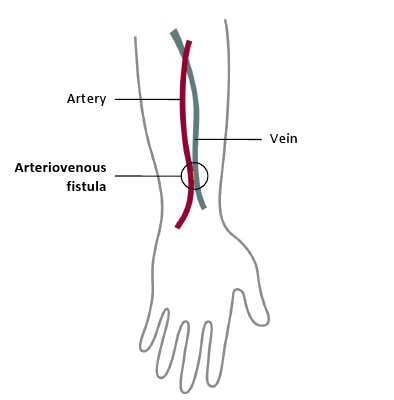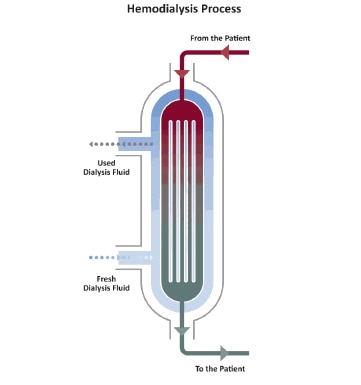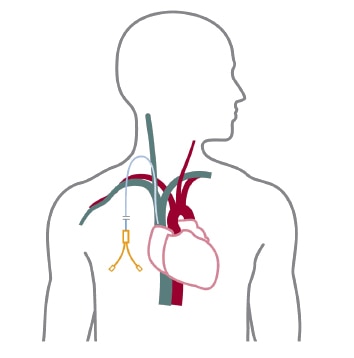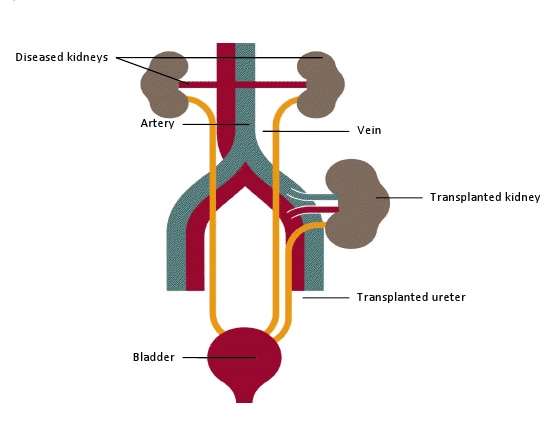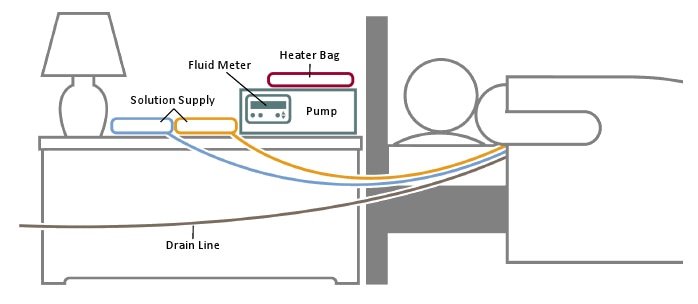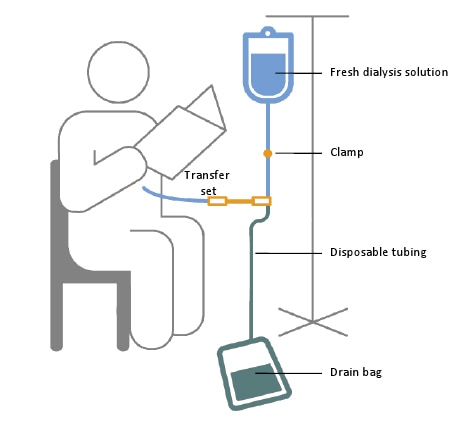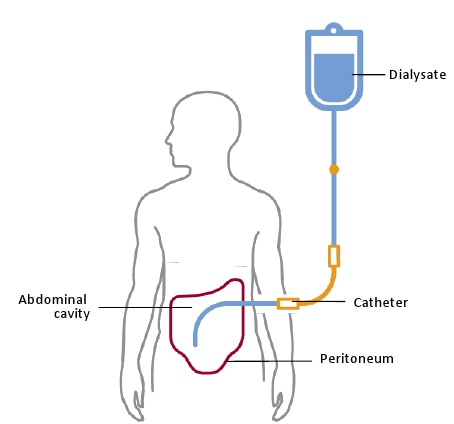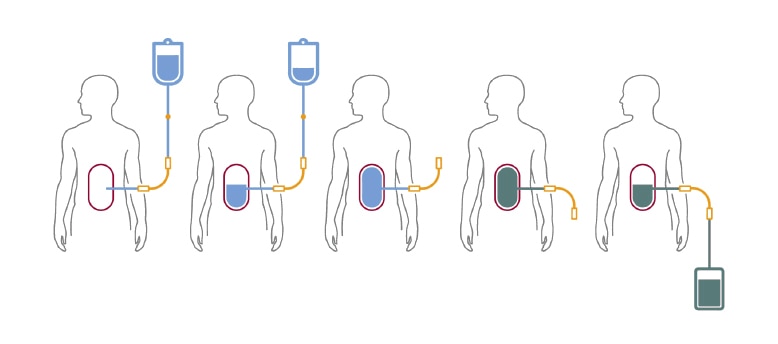Lesson 5: Getting Ready for Treatment (Beyond the Basics)
The content of this lesson, Getting Ready for Treatment (Beyond the Basics), meets the needs of qualified providers seeking to deliver the Kidney Disease Education (KDE) Services benefit, as defined by the Centers for Medicare & Medicaid Services (beneficiaries must have an eGFR of 29 or lower).
Lesson Objectives
By the end of each session, participants will be able to:
- Express a benefit of having access surgery months before starting dialysis
- Report two ways that the non-dominant arm should be protected for dialysis access
Session Starter
Considering what you have learned so far, which type of treatment do you think may be best for your situation?
What information would help you make a decision?
For group: Label four cups with options. Have participants place a cotton ball into the cup that they are considering choosing (their "choice"). Use for discussion.
Have flip chart or white board available to write down group's response to: What are the benefits of making a treatment choice sooner instead of later? Have group discuss whatever benefits they come up with. Examples:
- Learn more specifics about their choice and be ready
- They and their family will know what to expect
- May reduce the fear
- They will get a choice, emergency dialysis doesn't offer any choice only hemo with temporary access
- Can still change their mind
- Better to have surgery when feeling stronger vs being very ill
- They will be in control of the decision
OPTIONAL: Then ask what are the benefits of not making the choice (hopefully no one will have any).
Topics & Points to Cover
- When does dialysis start?
- Benefits of early access placement, including choice in type of dialysis (informed decision)
- Hemodialysis access
- Fistula, graft, catheter
- PROS and CONS of access type
- How to prepare for surgery and care for the access
- Peritoneal dialysis access
- Catheter
- How to prepare for surgery and care for the exit site
- Transplant evaluation
- Referral/paperwork for transplant center
- Surgical referral
- Immunizations, other lab tests
- Emotional preparation/acceptance (depression)
- Cultural considerations
- Be sensitive to your audience's cultural beliefs and norms
- Transportation considerations
Materials/Content for Learners
- Vascular Access for Hemodialysis
- Choosing a Treatment for Kidney Failure
- Patient information about AV fistula (Fistula First Catheter Last- website)
Background/Clinical Information for Educators
-
NIDDK videos:
- I feel fine. Why do I need to see a surgeon now?
- What is a fistula and how does it work?
- Why is a fistula the best option?
- What happens if I don't have the surgery now?
- What are the problems with a catheter?
- What should I do to prepare for surgery?
- How soon after surgery can I use my arm?
- Will I have more energy after starting dialysis?
- Hemodialysis
- Peritoneal Dialysis
Sample Outcome Assessment Questions
- True or False: Managing blood pressure is one of the most important ways to keep kidney disease from getting worse?
- True or False: People with kidney disease should limit the amount of salt/sodium in the diet?
Other outcomes:
- Patient states that managing blood pressure is the most important way to manage his/her KD.
- Patient states one way to change his/her eating to protect the kidneys.
- Patient tells one way he/she will approach use of OTC medications in the future.
- Smoking patient states that he/she is aware that smoking can worsen KD.
- Patient states what he/she will do with information from today's session.
Additional Resources for Download
These images are available free of charge to download and include in your patient education materials.
-
A schematic showing a transplanted kidney placed in the groin area. Native kidneys usually are not removed.
Download (JPEG, <1 MB)
-
A schematic of a continuous cycler-assisted peritoneal dialysis exchange while person is sleeping.
Download (JPEG, <1 MB)
-
A schematic of a person receiving continuous ambulatory peritoneal dialysis exchange while reading.
Download (JPEG, <1 MB)
-
A schematic showing that the peritoneal membrane is the semipermeable “filter” in peritoneal dialysis.
Download (JPEG, <1 MB)


